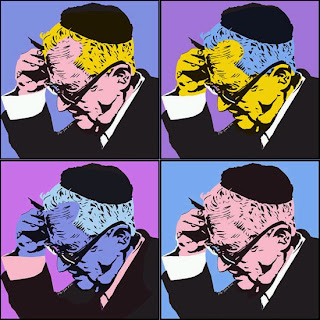
Book Review of "Present at Sinai: The Giving of the Law" by S.Y. Agnon, translated by Michael Swirsky (Jewish Publication Society, 1994). Originally published in Hebrew as "Atem Re'item" by Schocken Books, 1959
What will you study the night of Shavuot? How about immersing yourself in a collection of classic texts of rabbinic literature, creatively compiled and presented in one convenient volume by an iconic Nobel Prize-winning author?
S.Y. Agnon's "Present at Sinai: The Giving of the Law" is a rich anthology of biblical, talmudic, midrashic and mystical texts -- all on the subject of the giving of the Torah at Mount Sinai. In this unique volume, you will find texts that speak of the Torah's mystical origins in heaven prior to the creation of the world, the revelation of Torah from heaven by God at Mount Sinai, a section on the Ten Commandments and a post-Sinai reflection on the deeper meanings of Torah beyond Sinai.
In "Present at Sinai," Agnon is at once editor and author. As editor, he consulted hundreds of books of rabbinic literature and selected from them the texts to include. His talent as an author is expressed in the creative way that he arranged the texts. Rather than present them by textual chronology (Bible, Mishnah, Talmud, etc.), Agnon presents the sources by theme, creating a chronology from "Before Creation" to "The Giving of the Torah" and beyond. Each section contains selections from the full gamut of the rabbinic corpus, and with his storytelling genius, Agnon arranged these texts in a flowing narrative, with the sources doing the talking in their original language. In this book, you are not reading stories written by the author; instead, you are reading one grand epic "Story of Torah," as told in the language of the classical texts of Torah, woven together by Agnon.
What prompted Agnon, a master of original writing, to create an anthology of rabbinic texts relating to Shavuot? As an author with a deep connection to his religious roots, Agnon related to the experience of Shavuot, a celebration of the centrality of books in Judaism.
"In God's love for His people, He still gives us some of that same power which He gave us as we stood before Sinai and received the Torah and commandments," the narrator says in Agnon's story "The Sign."
Agnon was intrigued, I believe, by the divine origins of Judaism's very first book. Both "Torah From Heaven" and "Torah From Sinai" ascribe authoritative status to Judaism's "Original Book" and to the canon of sacred books that were written as commentaries on that "Original Book." This spoke deeply to Agnon, and is reflected in many of his writings.
In his Nobel Prize acceptance speech in 1966, Agnon said, "Who were my mentors in poetry and literature? First and foremost, there are the Sacred Scriptures, from which I learned how to combine letters. Then there are the Mishnah and the Talmud and the midrashim and Rashi's commentary on the Torah. After these come the poskim -- the later explicators of talmudic law -- and our sacred poets and the medieval sages, led by our Master Rabbi Moses, son of Maimon, known as Maimonides, of blessed memory."
Earlier in his life, in 1937, Agnon wrote the story "The Sense of Smell," where the narrator (who, in typical Agnonic fashion is a vehicle for Agnon's own voice) proclaims: "Since the Temple remains destroyed and we have no priests at service or Levites at song, instead I study Torah, the Prophets and the Writings, the Mishnah, the halachah and the haggadot, tosefta, dikdukei Torah, and dikdukei soferim."
In both instances, Agnon connects himself to the sacred texts of the Jewish tradition, the very texts that helped him shape his unique style of writing in modern Hebrew literature. The language of Agnon's novels and short stories is based on the Hebrew of rabbinic literature, whose many periods and genres Agnon brilliantly synthesized in a style all his own.
Agnon opens "Present at Sinai" with a midrash about the creation of the world, where the Torah declares, "I was the artistic tool [kli omanuto] of the Holy One, blessed be He." This midrash is as much about Agnon as it is about God. Much like the Torah served as God's artistic tool in creating the world, so, too, did the library of Torah serve as Agnon's artistic tool in creating his own world of literature.
On Shavuot, Moses received the Torah at Mount Sinai. Thousands of years later, Agnon - whose literary style and use of sources brought the Torah to modern readers - received the Nobel Prize in Literature. In a sense, Agnon accepted the Nobel Prize on behalf of the Torah.
Chag Shavuot Sameach